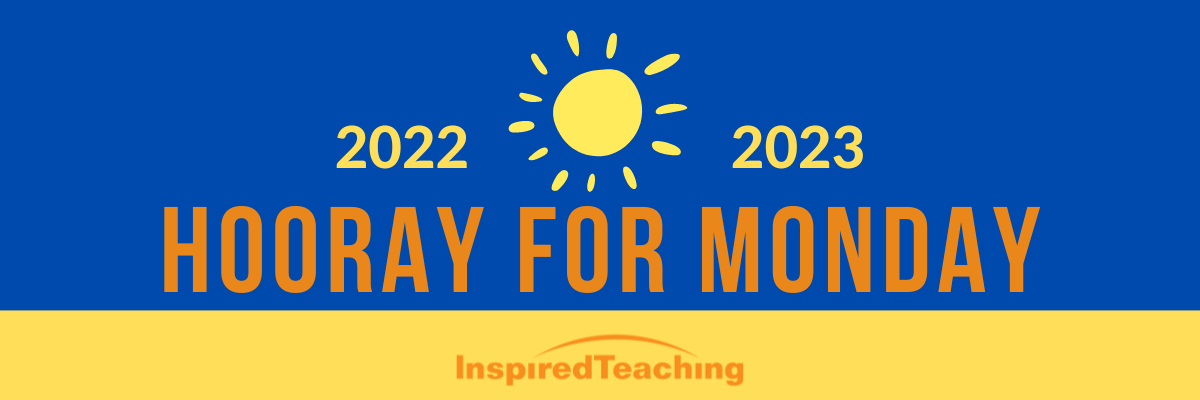November 21, 2022
By Aleta Margolis, Founder and President of Center for Inspired Teaching
Hooray for Monday is a weekly blog filled with questions, ideas, reflections, and actions we can all take to remodel the school experience for students.
You can now listen to Hooray for Monday on Spotify! Check out our podcast here.
Last week I was practicing yoga with a wonderful teacher, Tracy Simmons. Tracy is a thoughtful and observant teacher with a deep understanding of human anatomy. During one particularly challenging part of class, Tracy had us holding plank pose (which, for those who don’t know, is basically holding yourself up in a push-up position – and it’s not easy!). She coached us to engage our core, our abdominal muscles. As we struggled to hold this challenging pose, Tracy said, “Sometimes in moments like these we wish we were stronger.” (Tracy is clearly a mind-reader.) Then she continued, “But you don’t need to be stronger. You just need to access the strength you already have.” And with that, she guided us to engage additional muscles, our quadriceps, and use our breathing to help us hold the pose.

What if we taught our students with the expectation that they already have everything they need? That within each of them lies the intellect, the curiosity, the ability to persist that’s required to do the work in front of them? If we embrace that mindset, then we don’t have to wish they had – or were – something more. Our job changes from managing students’ deficits to helping them access their innate skills, strengths, and talents.
And if we believe our students already have these skills, strengths, and talents, then we can absolutely expect them to do challenging work, and hold them to those high expectations. When they stumble, as all humans do sometimes, our job is to ask “What additional supports might this student need in order to access their strengths?” and “What unmet needs might be preventing this student from accessing their strengths?” And that’s a far more productive question than the ones that tend to get asked, “What remediation does this child need?” “What’s wrong them?” and the like.
It may require stretching our imaginations to adopt this kind of asset-based mindset. Many of our students are indeed struggling – academically, social-emotionally, and in other ways too. And of course there is information our students haven’t yet learned, and skills they have yet to develop. But teaching them to notice their capacity to figure things out, apply their strengths where they are needed, and push through obstacles toward understanding is important both to their success in school and in life beyond it.
Holding students to high expectations doesn’t mean demanding they perform – whether those students are holding plank pose or factoring a quadratic equation. Holding students to high expectations means inspiring them to perform, by doing the complex, challenging, and joyful work of helping them access their strength.
Wishing you a very happy Thanksgiving, and a week in which you access the strength you already have.
Resources

Finding the Zone of Proximal Development
One way to help students build on their strengths is to help to understand when they are in their “zone of proximal development.” In simple terms, challenging students to spend time in their zones of proximal development means helping them identify their capabilities and competencies, and then stepping just far enough outside of their comfort zones to stretch toward what might be possible. This is a simple exercise to do with your students to help them understand this concept.
Yet is a powerful little word. It reminds us that learning is an evolving process, and that our current errors and missteps are part of the journey. Much like Tracy’s advice to notice the strength already inside us, yet offers hope that what we can’t do today we might be able to do tomorrow. Notice what happens when you intentionally use this word both with your students and yourself.


